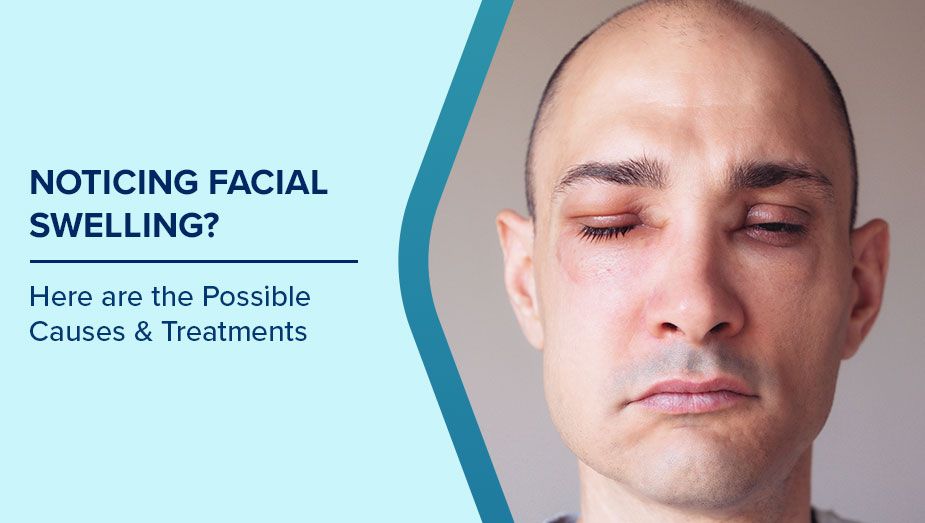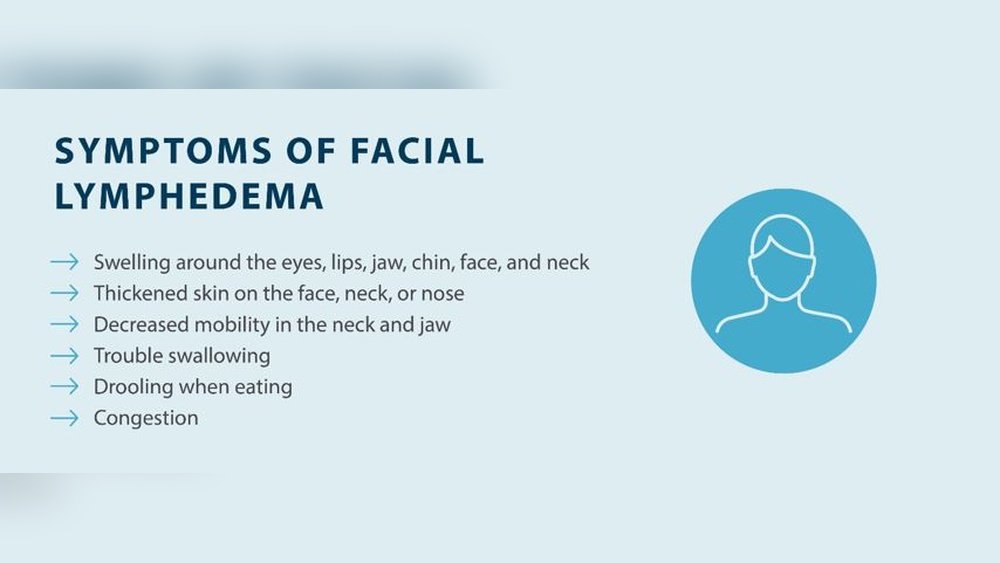Have you noticed your face looking unusually swollen or puffy, especially around your eyes, cheeks, or jaw? This facial puffiness might not just be about water retention or lack of sleep—it could be a sign that your lymphatic system is blocked or struggling.
When lymph fluid can’t drain properly, it causes swelling that can affect not only your appearance but also your comfort and health. Understanding why this happens and what you can do about it is crucial. You’ll discover the common causes of facial puffiness due to lymph blockage, simple at-home remedies you can try, and when it’s important to seek medical help.
Keep reading to learn how to reduce that uncomfortable swelling and help your face feel fresh and healthy again.
Causes Of Facial Puffiness
Facial puffiness often results from lymph blockage, causing discomfort and visible swelling. Understanding its causes helps in managing and preventing this condition. The lymphatic system plays a crucial role in fluid balance and immune defense in the face. When this system is impaired, fluid can accumulate, leading to puffiness.
Lymphatic System Role
The lymphatic system removes excess fluid and waste from tissues. It uses lymph vessels and nodes spread across the face and neck. When lymph flow slows or stops, fluid builds up under the skin. This causes swelling, known as lymphedema or facial puffiness. Proper lymph drainage keeps facial tissues healthy and clear.
Common Blockage Triggers
Blockages occur due to injury, surgery, or radiation near lymph nodes. Poor posture and tight clothing can also restrict lymph flow. Allergies and fluid retention from high salt intake contribute to puffiness. Aging reduces lymphatic efficiency, making swelling more likely. Identifying these triggers helps reduce facial fluid buildup.
Infections And Inflammation
Infections cause lymph nodes to swell as they fight bacteria or viruses. This swelling can block lymph flow and cause facial puffiness. Skin conditions like cellulitis increase inflammation and fluid retention. Chronic inflammation from autoimmune diseases also disrupts lymph drainage. Treating infections and inflammation reduces the risk of persistent puffiness.

Credit: www.youtube.com
Symptoms To Watch For
Facial puffiness caused by lymph blockage can show clear symptoms. Early detection helps manage the condition better. Watch closely for signs that indicate lymphatic issues.
These symptoms often appear gradually but can worsen without care. Knowing what to look for helps you seek help sooner.
Visible Swelling Areas
Swelling usually affects cheeks, under the eyes, and jawline. The puffiness might feel soft or firm to touch. It can be uneven, often more on one side of the face. The skin may look stretched or shiny in swollen areas.
Associated Discomfort
Facial puffiness may come with a feeling of tightness. Some people report mild pain or tenderness around swollen spots. There may be a sense of heaviness or pressure in the face. Movements like chewing or smiling can sometimes increase discomfort.
Signs Of Infection
Infections can worsen lymph blockage symptoms. Watch for redness or warmth over swollen areas. Fever or chills may occur alongside facial swelling. Pus or unusual discharge might appear if the blockage is severe. Immediate medical attention is needed if these signs appear.
At-home Relief Techniques
Facial puffiness caused by lymph blockage can feel uncomfortable and affect your appearance. Simple at-home techniques can reduce swelling and improve comfort. Consistent care supports your body’s natural healing process. These methods are easy to do and do not require special tools.
Warm Compress Application
Use a clean cloth soaked in warm water. Wring out excess water before applying it to the swollen area. Hold the compress on your face for 10 to 15 minutes. Repeat this 3 to 4 times daily. Warmth helps increase blood flow and opens lymph vessels. This encourages drainage and reduces puffiness.
Pain Management Options
Over-the-counter pain relievers can ease discomfort. Common choices include ibuprofen, acetaminophen, or naproxen. Follow the dosage instructions on the package carefully. Avoid taking medication on an empty stomach. These medicines reduce inflammation and relieve pain. Use them only as needed and not for long periods.
Lifestyle Adjustments
Stay hydrated by drinking plenty of water throughout the day. Water supports lymph fluid movement and flushes toxins. Eat a balanced diet rich in fruits, vegetables, and lean proteins. Avoid excessive salt, which can increase fluid retention. Gentle facial massages can also stimulate lymph flow. Practice good sleep habits to allow your body to heal. Avoid smoking and limit alcohol consumption to improve overall health.

Credit: www.mylungcancerteam.com
When To Seek Medical Help
Facial puffiness caused by lymph blockage can sometimes resolve on its own. Yet, certain signs show that medical help is necessary. Knowing when to seek help can prevent complications and lead to better outcomes. Watch for changes in your swelling and overall health.
Persistent Or Worsening Swelling
Swelling that lasts longer than two weeks needs medical evaluation. Increasing puffiness or spreading swelling also requires a doctor’s visit. This may indicate an underlying infection or a more serious condition.
Fever And Other Warning Signs
A fever with facial puffiness signals infection or inflammation. Other signs like redness, pain, or warmth around the swollen area need urgent care. These symptoms can mean the lymph blockage is causing an infection.
Impact On Daily Activities
If swelling affects eating, speaking, or breathing, see a healthcare provider immediately. Difficulty performing daily tasks suggests the condition is severe. Early treatment helps prevent permanent damage or complications.
Medical Treatments And Devices
Facial puffiness due to lymph blockage can cause discomfort and affect appearance. Medical treatments and devices aim to reduce swelling and improve lymph flow. These options help manage symptoms and prevent complications. Understanding each treatment type can guide patients toward better care.
Antibiotic Therapy
Antibiotic therapy treats infections causing lymph blockage. Doctors prescribe antibiotics when bacteria cause swelling. This treatment reduces inflammation and clears infection quickly. Early use can prevent further lymph damage. Patients must complete the full antibiotic course for best results.
Drainage Procedures
Drainage procedures remove excess lymph fluid from the face. Manual lymphatic drainage is a gentle massage technique. It helps move lymph fluid away from blocked areas. In some cases, doctors may use specialized devices to assist drainage. These procedures lower puffiness and improve facial contour.
Lymphedema Management Tools
Various tools support lymphedema care at home or clinic. Compression garments apply gentle pressure to reduce swelling. They improve lymph flow and prevent fluid buildup. Pumps and bandages also help maintain lymph movement. Consistent use of these tools offers lasting relief from puffiness.

Credit: www.maxhealthcare.in
Frequently Asked Questions
Can Lymph Nodes Cause A Puffy Face?
Swollen lymph nodes can cause facial puffiness by blocking lymphatic drainage. This leads to fluid buildup and visible swelling in the face.
How Do I Get Rid Of Lymphatic Swelling In My Face?
Apply warm compresses to reduce swelling and pain. Take over-the-counter pain relievers and rest adequately. Stay hydrated and maintain a healthy diet. Practice good hygiene to prevent infection. Consult a doctor if swelling persists, worsens, or if you have fever or difficulty with daily activities.
How Do You Unclog Your Face Lymphatic System?
Gently massage your face toward lymph nodes to boost drainage. Use warm compresses and stay hydrated. Maintain a healthy diet and get enough rest. Avoid touching your face to prevent infections. Seek medical advice if swelling persists or worsens.
Can Blocked Lymph Nodes Cause Swelling?
Blocked lymph nodes can cause swelling by trapping lymph fluid, leading to puffiness and discomfort in the affected area.
What Causes Facial Puffiness Due To Lymph Blockage?
Facial puffiness occurs when lymph fluid builds up, blocking normal drainage in facial tissues.
How Can Blocked Lymph Nodes Make My Face Swell?
Blocked lymph nodes trap fluid and waste, causing swelling and a puffy appearance.
Conclusion
Facial puffiness from lymph blockage can feel uncomfortable and worrying. Simple home care like warm compresses and rest often helps reduce swelling. Drinking water and eating healthy foods support your body’s healing. Watch for signs like fever or persistent swelling that last over two weeks.
These symptoms need a doctor’s check to rule out serious issues. Early care can prevent complications and improve your comfort. Taking small steps daily makes a big difference in managing lymph-related puffiness. Stay attentive to your body and seek help when needed.
 Skip to content
Skip to content 